THE FEELGOOD FIELD JOURNAL – GUATEMALA
FROM EFICO’S GREEN COFFEE TRADERS RAF & ERIC
Home to volcanoes, Mayan ruins, and lush rainforests, Guatemala is a Central American country rich with culture, history, and geography. And the country’s high-quality coffee market is an excellent example of all three. While other countries are catching up in the volume of beans produced, Guatemala remains famous for producing some of the most flavourful and nuanced cups in the world. No wonder both our colleagues Raf & Eric were excited to soak up the vibrancy of Guatemala, meet wonderful colleagues and partners, and of course sample some amazing coffee.

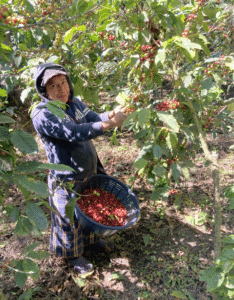

“It is always a pleasure to go to Guatemala” – Eric adds, : “And the beginning of the year is without a doubt the ideal time to give roasters-partners -who occasionally travel with us- a look behind the busy scenes. It is really satisfying for everyone to be able to experience that activity on site, and to be able to pass on and share a mutual passion for the coffee business.”


“Once again I noticed (and realized again) that there is an enormous amount of human labor in all stages of Guatamalan coffee production,” says Raf. “The seasonal pickers select the cherries one by one, which is a very painstaking and precise handiwork. This is reflects in the cup; our Guatemalan coffees are of exceptional quality, still yet affordable.”
Eric adds: “We are very lucky to still have acces to these exceptional beans. You should know that young Guatemalans, especially those living in rural areas, are leaving their farms to seek economic opportunities elsewhere (mostly United States), resulting in labor shortages in the agricultural sector.”
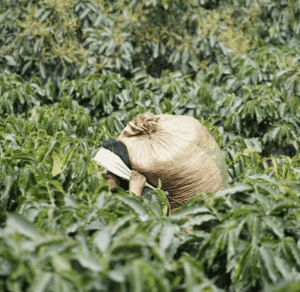
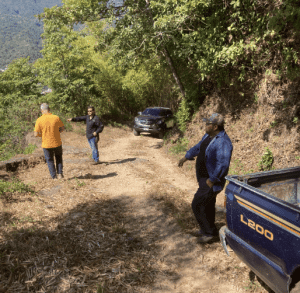
Raf continues: “Fewer pickers means that sometimes the entire harvest cannot be brought in on time. And speaking of (bad) timing – just like in other coffee-producing countries – climate and climate change are ‘hot’ topics and major spoilers in the Guatemalan agricultural industry. Coffee cultivation is strongly affected and smaller coffee producers face major challenges. This year I noticed in the field on some trees ‘ready-to-be-picked cherries, next to a brightly blooming coffee flowers. Last year it rained twice as much in September as the average of the last 5 years. In addition to the landslides caused by these heavy rains, the coffee harvest had to be postponed for a while. On the one hand, you have the phenomenon of ‘La Niña’ , which has led to variations in the precipitation pattern -which influence the (yield) of the coffee crop. On the other hand, you have the rising cost of fertilizer. Both have affected the harvest calendar and the crop yields; resulting in a 15% less harvest this year.”
Eric adds: “The coffee sector faces a long list of challenges, ranging from price volatility, rising production costs, reduced land and labor availability to the need to improve the social conditions of small producers, climate change and the scarcity of environmental resources such as water.
This year -thanks to substantial donations from several roasters- some cooperatives were able to invest in coffee fermentation systems that use 70% less water than previous systems.”
While reminiscing about the future of coffee and guatemalan coffee in particular, Raf tells: “Generation dynamics are and will continue to be important for the future of coffee – not only in Guatemala, but in coffee-producing areas around the world. That is probably why I was so charmed by meeting the young coffee entrepreneur Max Pérez at his Finca la Hermosa.
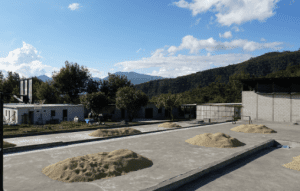
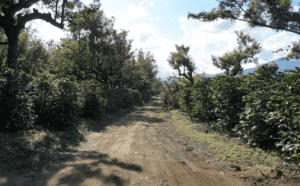
Born and raised amidst coffee plantations and a parchment warehouse at home, Max always had the idea of starting a coffee business himself. In 2010 he began to develop a specialty coffee farm that would blend tradition and innovation to supply its customers with amazing coffees, while having a positive impact in society. Fast foward today, the farm is divided in thirteen plots in full production, featuring traditional varieties as Pache, Typica, Caturra, and Bourbon, as well as the trendy Pacamara and Geisha. The quality of ‘Finca Hermosa’s coffees has been rewarded with different national and international prizes in the past years, including the Cup of Excellence auction program. Really impressive.
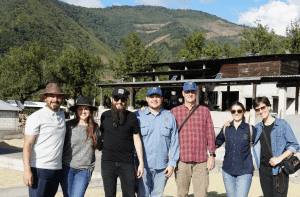
“What has stayed with you the most, Eric”, Raf asks, “what do you remember most about the trip? Eric replies: “Actually something you mentioned earlier, Raf; the thing that sticks with me on these origin journeys is how much manual labor and personal handwork is involved – especially in the origin. The amounts of patience, craftsmanship and passion that come together in one cup of coffee, that is and will remain remarkable. There are many steps from seed to our precious cup (planting, harvesting, processing the cherries, drying and exporting the beans, divers quality controls, various tastings, roasting the coffee, grinding the coffee, brewing the coffee,… .), and at every stage passionate and committed people are involved. The coffee we know and enjoy has come a long and interesting way to reach your cup.”
ORIGIN SNAPSHOT – GUATEMALA
Since Efico’s Central American headquarters are based in Guatemala, EFICO has access to all local gems from all different regions and with all possible labels/certifications: Fairtrade, Rainforest, Organic, Rainforest Organic, …
Many factors contribute to the unique character of Guatemalan coffee, including the country’s climate, altitude, and soil. Guatemala is located in the so-called “coffee belt,” a region of the world that straddles the line between the tropics and subtropics. This gives the coffee a more balanced flavour than coffee beans from strictly tropical or temperate areas.
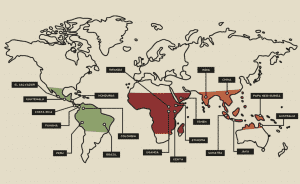
The country’s high altitudes and variety of microclimates, from the highlands of Antigua to the volcanic soils of Huehuetenango, also play a role, resulting in slower-growing plants that produce beans with a more concentrated flavour. Finally, the soils of Guatemala are rich in minerals, which impart a characteristic sweetness to the coffee. All of these factors combined to create truly wonderful coffee beans.
Guatemalan Coffee Characteristics
–
General Guatemalan Coffee Characteristics
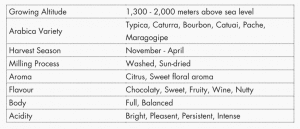
Types of Guatemalan Coffee Beans
–
Six main varieties of Arabica coffee beans are grown in Guatemala: Typica, Caturra, Bourbon, Catuai, Pache, and Maragogipe.
- Typica: This variety is known for its tall stature, low yield, and high susceptibility to coffee leaf rust. But it’s precisely these characteristics that give the Typica more intense flavour and refreshing acidity.
- Caturra: An average-sized, green and compact plant with good yielding potential of standard quality in Central America. It’s a natural mutation of the Bourbon variety. High susceptibility to coffee rust.
- Bourbon: It’s characterised by excellent cup quality, tall stature, green colour, and relatively low production. Bourbon is susceptible to major diseases, but its cup quality makes it a valuable variety for coffee growers.
- Catuai: Highly susceptible to coffee rust but produces high-quality coffee beans characterised by great vigour and low height with higher yield potential. And due to its small size, it can be planted at almost double the density.
- Pache: A compact, bronze-coloured plant with medium yield potential resulting from a natural mutation of the Typica variety. It’s very susceptible to major diseases but has good quality at high altitudes.
- Maragogipe: Some of the largest coffee beans you’ll find. The same goes for its leaves and internodes. Although it’s susceptible to rust and, therefore, very low yielding, the cup quality is still something between good and very good.
Overview of Guatemalan Coffee Industry
–
The coffee industry began to develop in Guatemala in the 1850s and 1860s, with German immigrants playing a pivotal role in its introduction. Initially, coffee cultivation was mixed with cochineal, an insect used to produce a red dye.
However, coffee became the dominant crop over time, and small coffee plantations flourished in the Amatitlán and Antigua areas. Though initial growth was slow due to a lack of knowledge and technology, the industry eventually thrived.
Back in the day, many planters had to rely on loans and borrow from their families to finance their coffee estates, with coffee production in Guatemala increasingly owned by foreign companies with capital to buy plantations and invest.
Guatemalan Coffee Regions
–
You may be wondering, “Where does Guatemalan coffee come from?” There are about eight Guatemalan coffee regions where delicious coffee beans are best grown: Acatenango Valley, Antigua Coffee, Traditional Atitlán, Rainforest Cobán, Fraijanes Plateau, Highland Huehuetenango, Nuevo Oriente, and Volcanic San Marcos.

Let’s take a closer look at each of them:
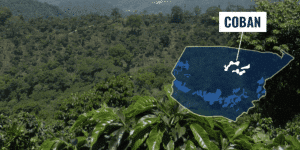
Rainforest Coban
The resulting beans have a distinctive flavour that is a far stretch from other sunny volcanic regions. Subtle, well-balanced body and a pleasant aroma.
Coffee growing region profile:
Temperature: 15 – 20ºC
Precipitation: 3,048 – 4,064 mm
Humidity: 85 – 95%
Altitude: 1,311 – 1,707 meters
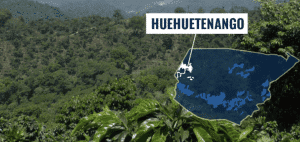
Highland Huehuetenango
Coffee growing region profile:
Temperature: 20 – 24ºC
Precipitation: 1,219 – 1,422 mm
Humidity: 70 – 80%
Altitude: 1,524 – 1,981 meters

Volcanic San Marcos
The warmest of all the regions, San Marcos also experiences the highest rainfall levels, reaching up to 5,000 mm annually. The rains tend to come sooner than in other areas, which results in the earliest flowering. Small coffee farms with their own processing plants produce the majority of Volcanic San Marcos.
And because of the unpredictable nature of the weather during harvest season, much of the coffee is pre-dried in the sun and then finished in a Guardiola dryer. This results in delicate floral notes in the aroma and taste, as well as pronounced acidity and a good body.
Coffee growing region profile:
Temperature: 21 – 27ºC
Precipitation: 4,063 – 5,080 mm
Humidity: 70 – 80%
Altitude: 1,311 – 1,829 meters

Traditional Atitlán
The three volcanoes that overlook Lake Atitlán – Toliman, Atitlan, and San Pedro – play a role in the microclimate, and the daily winds (Xocomil) help to stir the cold waters of the lake. This creates an ideal growing environment for the Atitlan coffee cultivated on the slopes of these volcanoes. The rich soil and ideal climate conditions produce delightfully aromatic beans with a bright citrus acidity and full body.
Coffee growing region profile:
Temperature: 20 – 22ºC
Precipitation: 1,829 – 2,337 mm
Humidity: 75 – 85%
Altitude: 1,524 – 1,707 meters
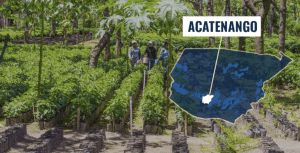
Acatenango Valley
Acatenango-rich, sandy soils are constantly replenished with minerals from the nearby Fuego volcano. The high altitude (up to 2,000 meters) creates a dense forest canopy that protects the coffee trees from the harsh sun. The temperate winds from the Pacific Ocean also help dry the coffee cherries, resulting in a well-balanced coffee with complex flavour notes.
Coffee growing region profile:
Temperature: 14 – 31ºC
Precipitation: 1,219 – 1,829 mm
Humidity: 70 – 80%
Altitude: 1,311 – 1,981 meters
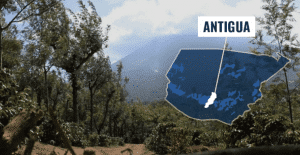
Antigua Coffee
The region’s low humidity, rich volcanic soil, and exposure to lots of sun and cool nights create ideal growing conditions for coffee plants. The dense shade given by the region’s trees protects the coffee plants from periodic frosts. The area’s three volcanoes – Agua, Fuego, and Acatenango – provide a regular dusting of mineral-rich ash that enriches the soil. Antigua coffee is known for its smooth, balanced flavour with notes of chocolate and caramel.
Coffee growing region profile:
Temperature: 18 – 22ºC
Precipitation: 813 – 1,219 mm
Humidity: 65%
Altitude: 1,524 – 1,707 meters
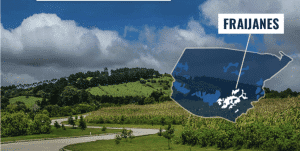
Fraijanes Plateau
Although clouds, fog, and heavy dew are common in the early morning, they quickly burn off, allowing all coffee cherries to be sun-dried. As a result, Fraijanes coffee beans are well-balanced, with bright acidity and sweet mouthfeel.
Coffee growing region profile:
Temperature: 12 – 26ºC
Precipitation: 1,524 – 3,048 mm
Humidity: 70 – 90%
Altitude: 1,372 – 1,829 meters
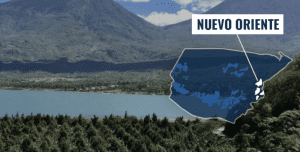
Nuevo Oriente
Coffee growing region profile:
Temperature: 18 – 25ºC
Precipitation: 1,829 – 2,032 mm
Humidity: 70 – 80%
Altitude: 1,311 – 1,707 meters
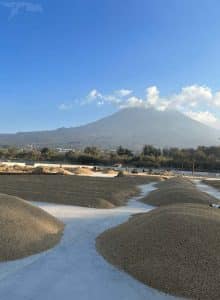
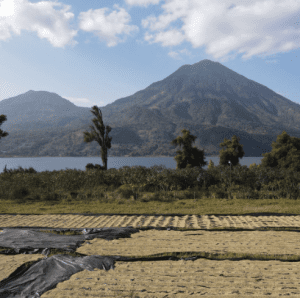
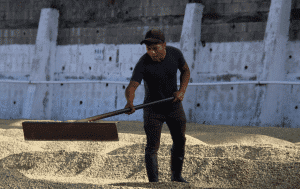
What does Guatemalan Coffee taste like?
–
Depending on the region, Guatemala’s coffee taste can have floral and citrus aromas, with chocolate, sweet, fruity, wine or nutty flavours. This coffee is also known for its full and balanced body, as well as its bright, pleasant, persistent and intense acidity. All of these elements combined craft an unforgettable cup of coffee.
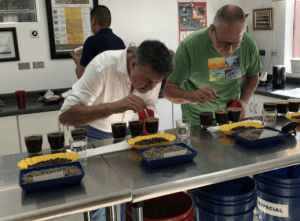
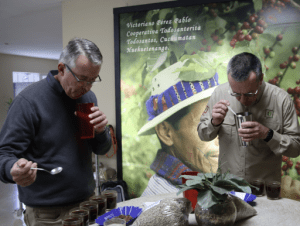

Guatemalan Coffee Production & Export
–
The country’s coffee industry began in the early 1850s, and today it’s an essential component of its economy. Most of the country’s coffee is grown on small family coffee farms, typically harvested by hand. After being picked, the beans are then wet-processed to remove the fruit before being sun-dried and roasted.
During the 2021-2022 period, Guatemala’s coffee industry exported 3,470,000 bags (60kg each). We’re talking about a total export weight of 202,200,000 kg of coffee.
The vast majority of Guatemala’s coffee exports are destined for the United States (49%). Other popular destinations include Japan (16%), Canada, and Europe. Now, in terms of Guatemala’s coffee production, these are the numbers according to the latest exhaustive work of the World Coffee Research:
Global export rank: #10
Annual export volume: 3,269
% Arabica vs. Robusta:27%
Number of coffee farms: 175,100
Total cultivated area: 308,217
All-agriculture R&D intensity:14
Coffee produced by smallholders: 44%
Smallholder productivity: 702
Average smallholder farm size:1 Hectares
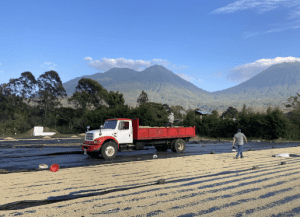

Where to buy Guatemalan Coffee Beans?
–
EFICO has access to all local gems from all different regions and with all possible labels/certifications: Fairtrade, Rainforest, Organic, Rainforest Organic, …
If you’re looking for a unique coffee experience, Guatemalan coffee beans are worth exploring. With a distinct flavour profile, notes, and a wide variety of growing regions, there’s something for everyone who wants to taste this coffee. And if you’re not sure where to start, we’ve got you covered!

ACKNOWLEDGEMENTS & REFERENCES
Thanks to Renaud, Nery, Abner, Elmer, Nelson, Sebastien, Joëlle from EFICO Centram for coordinating, initiating, entertaining and educating us and our partners, muy apreciado!
World Coffee Research – Focus Country Guatemala
EFICO – Guatemala
